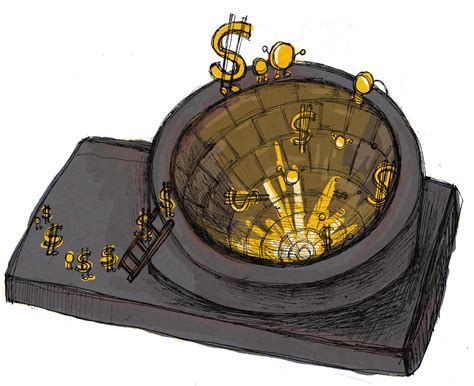Why is Bitcoin price up today?
After undergoing a significant decrease in value for much of 2022, bitcoin has experienced a subtle resurgence, quietly witnessing its price double over the past year.
The price of the widely-recognized cryptocurrency reached an 18-month peak of US$37,344 in the previous week, marking a year-to-date increase of more than 100 percent. Despite this surge, BTC has not yet returned to its all-time highs of US$67,617 recorded in November 2021.
According to analysts interviewed by Global News, the cryptocurrency space is stabilizing after a tumultuous year marked by scandals and challenging market conditions. Anticipation for increased mainstream adoption of bitcoin and its counterparts in the coming months is driving the recent surge in asset value.
Greg Taylor, Chief Investment Officer at Purpose Investments, suggests that there was a substantial market correction for cryptocurrencies in 2022, with many investors liquidating their holdings following the asset’s value spike towards the end of 2021.
In 2022, central banks worldwide intensified their interest rate tightening policies, prompting a shift of funds from the stock market to safer assets like the U.S. dollar. As equity markets faced challenges amid the uncertainty of rising interest rates, cryptocurrencies also felt the pressure.
Alex Tapscott, Managing Director of the Digital Asset Group at Ninepoint Capital, explains that cryptocurrencies, including Bitcoin, faced existential challenges due to the closure of numerous exchanges, the collapse of cryptocurrency tokens, and the high-profile downfall of FTX. The collapse of FTX, once valued at a peak of US$32 billion, led to the conviction of founder Sam Bankman-Fried for defrauding investors.
In the aftermath of the FTX collapse, regulators adopted an aggressive stance towards the cryptocurrency sector, impacting its growth prospects. However, Tapscott believes that the negative repercussions of FTX’s unraveling were anticipated at the time of the collapse, and the subsequent fraud conviction marked a turning point in crypto’s history.
Looking ahead, Taylor contends that the removal of “bad actors” and speculative forces is contributing to the stabilization of the crypto space. Increased regulation, he believes, will ultimately build trust in the system.
There are speculations that the U.S. cryptocurrency market may take a step closer to mainstream adoption with the potential launch of bitcoin exchange-traded funds (ETFs). ETFs, which have been approved for years in Canada and Europe, provide investors with exposure to a basket of securities without directly owning them. The U.S. Securities Exchange Commission’s previous reluctance to approve bitcoin ETFs may be changing, with BlackRock, the world’s largest ETF provider, showing interest.
Tapscott points out another factor influencing the scarcity of bitcoin—the upcoming “halving” event expected in April 2024. This event, reducing the payment to miners by 50 percent, is anticipated to cut the supply of new bitcoin by half. Historically, bitcoin prices have rallied after previous halvings.
Despite recent corrections in traditional equity markets, Taylor suggests that the forces that pushed crypto assets down in value last year may turn into a boon. Higher inflation and interest rates could drive investors towards physical assets like energy and gold, seeking a safe haven from central bank rates.
Tapscott anticipates that the crypto industry will be a significant topic in the 2024 presidential election, leading to increased clarity on how regulators will approach these assets. While acknowledging potential volatility, he emphasizes that widespread adoption and the expansion of use cases for blockchain-backed technologies will contribute to a positive future for bitcoin and its crypto counterparts.
Mining Industry Dynamics and the Halving Effect
The Bitcoin mining industry plays a pivotal role in the market’s dynamics. Bitcoin’s protocol dictates a halving event approximately every four years, reducing the reward miners receive for validating transactions. The next halving is projected for April 2024.
In response to the upcoming halving, the mining industry is witnessing a surge in investment. The hash rate, indicative of the computational power securing the Bitcoin network, is skyrocketing. While this trend may potentially drive out smaller miners, larger mining entities are accumulating Bitcoin aggressively, hoarding their holdings in anticipation of future price appreciation.
Global Economic Uncertainties and Inflation Hedge
Bitcoin has gained recognition as a hedge against economic uncertainties and inflation. Traditional markets often witness a flight to safe-haven assets during times of economic turmoil. Bitcoin, with its decentralized nature and finite supply, presents itself as a digital alternative to traditional safe-haven assets like gold.
As concerns about inflation grow in the face of unprecedented global economic challenges, investors are increasingly turning to Bitcoin to preserve and grow their wealth. This surge in demand is a direct response to the perceived value of Bitcoin as a store of value in times of economic uncertainty.
Conclusion
In conclusion, the surge in Bitcoin prices today is a result of a confluence of factors. Institutional interest, scarcity dynamics, mining industry trends, and Bitcoin’s role as an inflation hedge collectively contribute to the current bullish sentiment. As the cryptocurrency market continues to evolve and integrate with traditional finance, understanding these factors becomes crucial for investors and enthusiasts alike. Today’s surge may be a snapshot of a larger trend, highlighting the evolving landscape of Bitcoin and its growing acceptance in the broader financial ecosystem.








